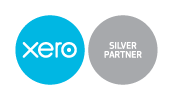But once you realise you need software to help you, how do you go about finding the right solution? Here are my top 7 tips to help you make the right choice.
1. What do you want to achieve with business software?
We progress and achieve great things by facilitating and embracing change. However, change for change’s sake is counterproductive. So exactly what is it you hope to accomplish by changing your software? Increased efficiency? Lower costs? Paperless office? There are many reasons why you should review your technology, however without a good understanding of the desired outcome, you may not find the right solution.
2. Build your business processes
Before you even start thinking about the tasks and workflows you need your software to help you with, you need to ensure that you have the right processes for your business. Automating or building upon the wrong workflow will not help your business to run efficiently. Don’t be precious…just because you’ve always done something a certain way doesn’t mean it’s the best way of doing it!
3. What are your “must have” and “nice to have” features?
It’s very easy to get carried away when thinking about all the things technology must be able to do. Think about what is so fundamental to the smooth running of your organisation that you cannot do without it and separate these requirements from the features that would be beneficial, but that you could cope with out.
For example, when buying a car 0 to 60 mph in under 5 seconds and a convertible roof may be nice to have, however space for 2 children’s car seats and plenty of room in the boot for a pushchair may be essential.
4. Review your existing technology and software
Review if and how your existing applications help your workflow. Every organisation is different, however there is almost certainly one application or function that is more important than the others. This could be managing customers, sales and marketing (CRM), maintaining financial records (bookkeeping/accountancy applications) or reporting on key metrics or cash flows, like Float.
5. Make a shortlist of business software you want
You will now have a very good understanding of what your ideal process is, what functionality is already served and what is missing from your software stack. It’s time to start plugging these gaps! Let’s assume your accounting software is the one thing you do not need to change. You need to have better control of your sales process and need to improve your cash flow. To remain lean and efficient your software packages need to be able to talk to each other, using APIs. Start by looking at your accounting software’s website for existing integrations – there will almost certainly be many. Review the features these “partner” apps have and short list the ones that meet your essential features. If there are none which do, a wider internet search, asking questions in your network or an independent business software company can help.
6. Demos and trials
Many software vendors will offer free trials or will arrange a demo with one of their team. Use these opportunities to see how the application could work for your organisation. Ask lots of questions and ensure you have a great understanding of how the software will work for you and understand what the cost will be, including any setup or implementation fees.
7. Implement your business software stack!
Once you have selected the right applications you now need to get it up and running. For cloud based software there may not be any installations required, however it is likely you will need to set and configure it, especially if you plan to link with other programs. This can be time consuming and costly if you get it wrong. The software vendor may offer support with this, or charge for implementation for more complex solutions.
Summary
With many hundreds of business software applications and integrations between them, finding the right flow for your business can be time consuming and daunting. It may take several days per application to get it right, however following the steps above will help you get the right solution. Or of course, you could contact the business software experts at Octopus Blue!
Andy Bailey will be speaking in more detail on this subject at Accountex at 10:15 on 11 May.
About Octopus Blue
Octopus Blue help SMEs optimise their processes and software, enabling you to operate in the most time efficient and cost effective way. Octopus Blue are uniquely independent, whole of market, business software experts. Our experienced consultants will implement and configure your entire software stack, empowering you to laser focus on what you do best.

